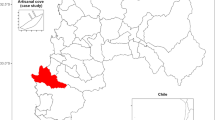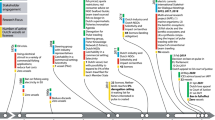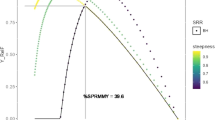Abstract
In the present paper, we consider a bio-economic equilibrium model which describes the dynamics of a fish population fished by several fishermen seeking to maximize their profits. Each fisherman tries to find the fishing effort which maximizes his profit at biological equilibrium without any consultation with others, but all of them have to respect two constraints: (1) the sustainable management of the resources ; and (2) the preservation of the biodiversity. With all these considerations, our problem leads to a generalized Nash equilibrium problem. The objective is to show that even when a fisherman \(i\) provides a fishing effort equal to twice the fishing effort of a fisherman \(j\), then the profit of fisherman \(i\) is not necessarily double that of fisherman \(j\).




Similar content being viewed by others
References
Bulte EH (2003) Open access harvesting of wildlife: the poaching pit and conservation of endangered species. Agric Econ 28:27–37
Clark WC (1990) Mathematical bioeconomics: the optimal management of renewable resources, 2nd edn. A Wiley-Interscience, New York
Cottle RW, Dantzig GB (2006) A life in mathematical programming. Math Program 105:1–8
Cottle RW, Pang JS, Stone RE (1992) The linear complementarity problem. Academic Press, New York
El Foutayeni Y, Khaladi M (2010) A new interior point method for linear complementarity problem. Appl Math Sci 4:3289–3306
El Foutayeni Y, Khaladi M (2012a) Using vector divisions in solving the linear complementarity problem. J Comput Appl Math 236:1919–1925
El Foutayeni Y, Khaladi M, Zegzouti A (2012b) A generalized Nash equilibrium for a bioeconomic problem of fishing. Stud Inform Univ HERMANN 10:186–204
El Foutayeni Y, Khaladi M (2012c) A generalized bio-economic model for competing multiple-fish populations where prices depend on harvest. J Adv Model Optim 14:531–542
El Foutayeni Y, Khaladi M (2013) General characterization of a linear complementarity problem. Am J Mod Optim 1:1–5
Lemke CE (1965) Bimatrix equilibrium points and mathematical programming. Manage Sci 11:681–689
Merinoa G, Maynou F, García-Olivares A (2007) A new bioeconomic simulation tool for small scale fisheries based on game theory: GAMEFISTO model. Aquat Living Resour 20:223–230
Murty KG (1971) On a characterization of P-matrices. SIAM J Appl Math 20:378–383
Purohit D, Chaudhuri KS (2007) Nonselective harvesting of two competing fish species: a dynamic reaction model. Int J Comput Appl Math 2:191–208
Smith VL (1969) On models of commercial fishing. J Polit Econ 77:181–198
Author information
Authors and Affiliations
Corresponding author
Rights and permissions
About this article
Cite this article
El Foutayeni, Y., Khaladi, M. Fishermen’s Profits Maximization: Case of Generalized Nash Equilibrium of a Non-symmetrical Game. Acta Biotheor 62, 325–338 (2014). https://doi.org/10.1007/s10441-014-9223-y
Received:
Accepted:
Published:
Issue Date:
DOI: https://doi.org/10.1007/s10441-014-9223-y




